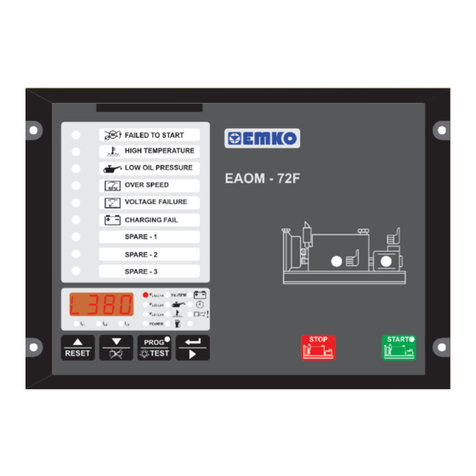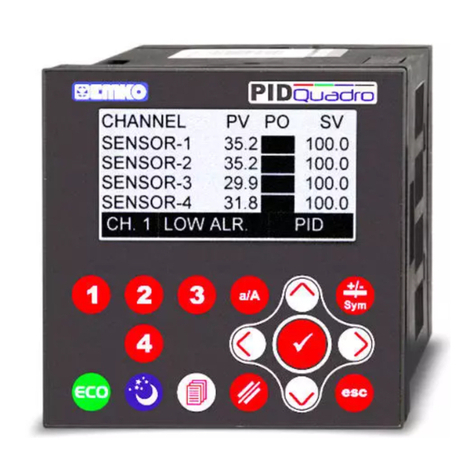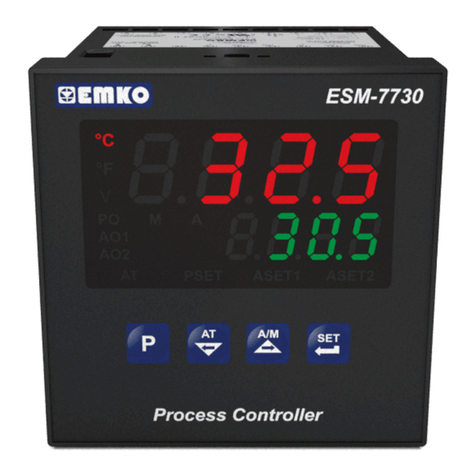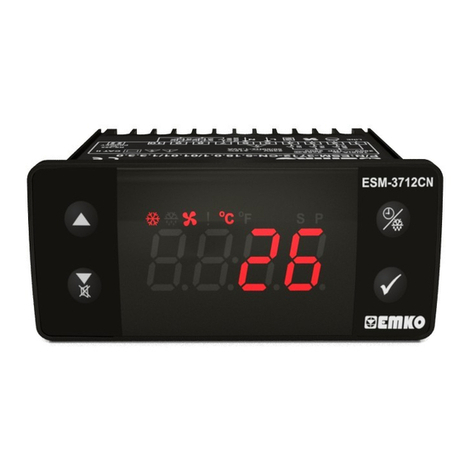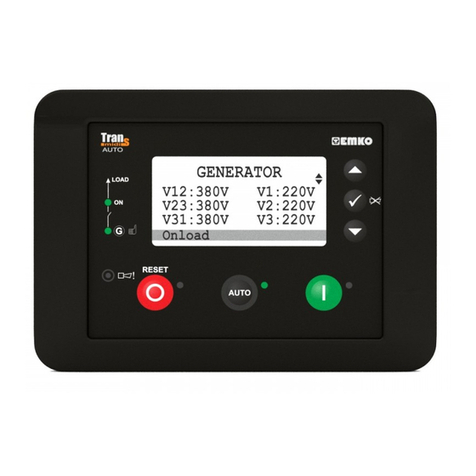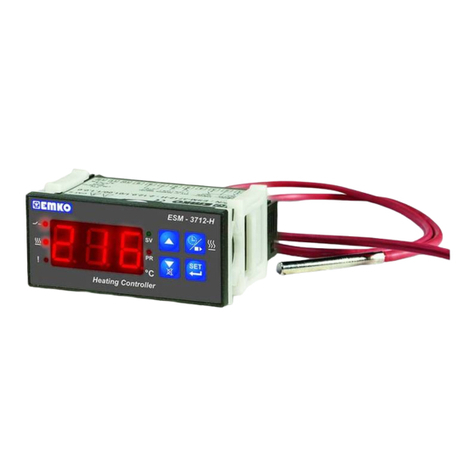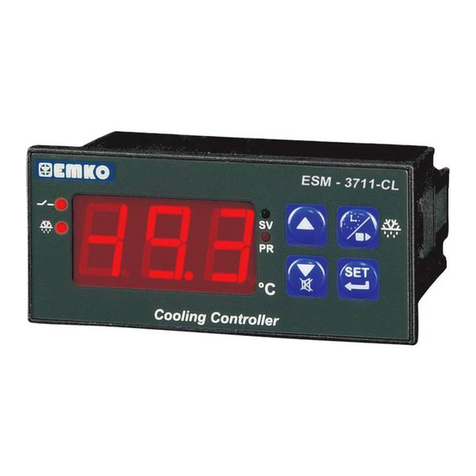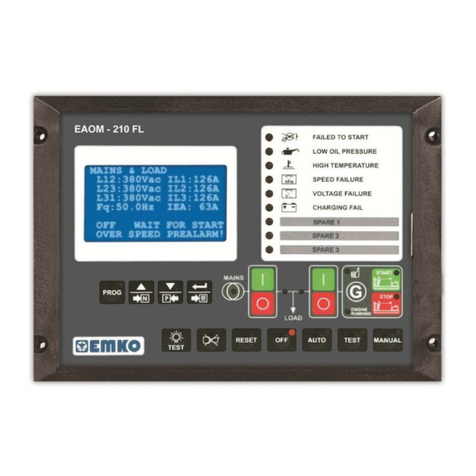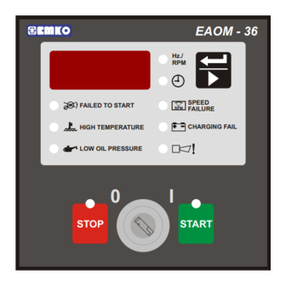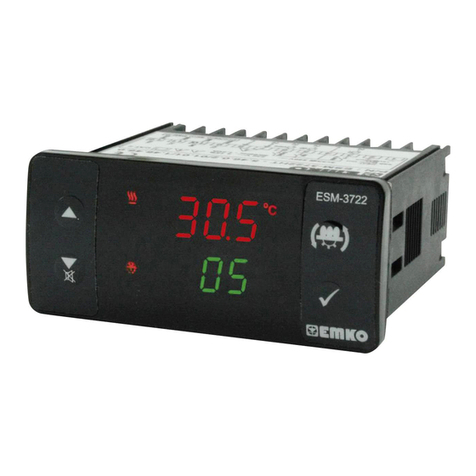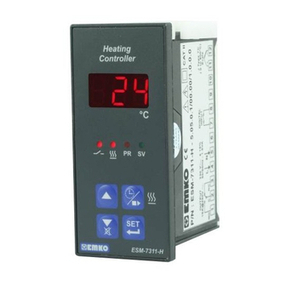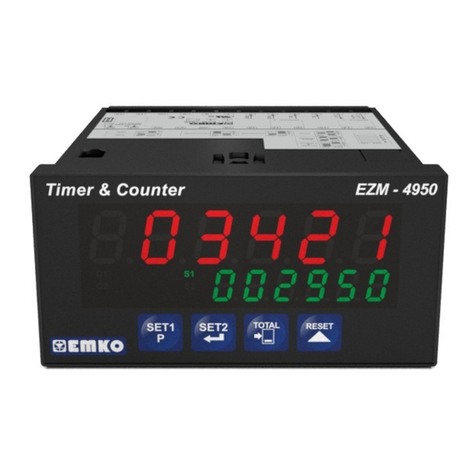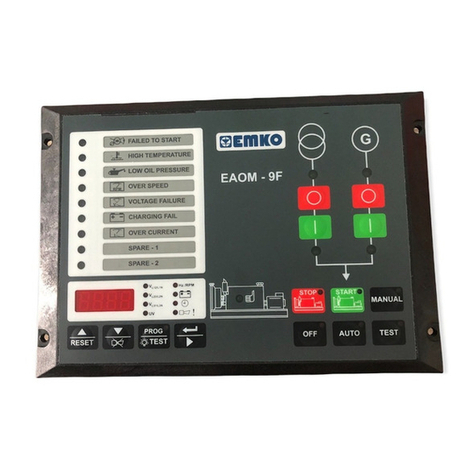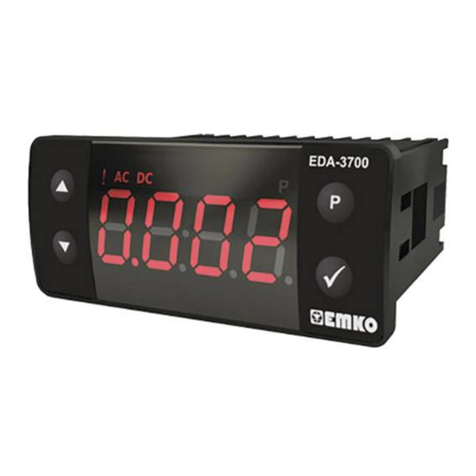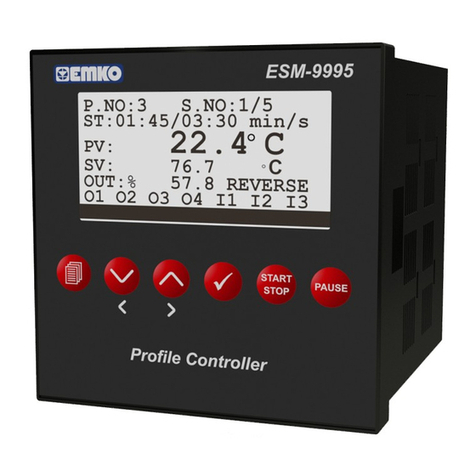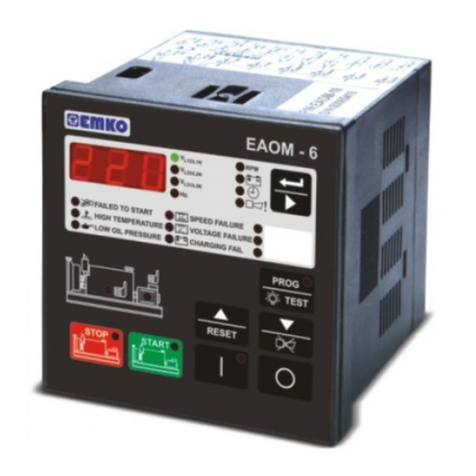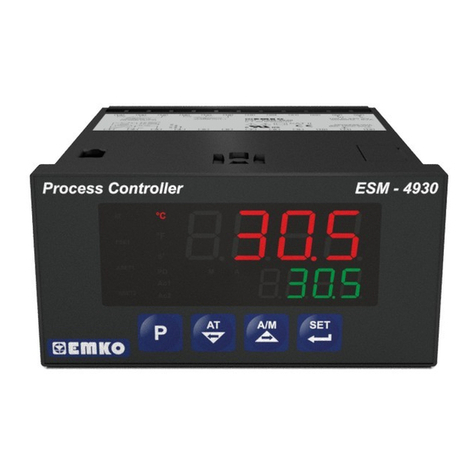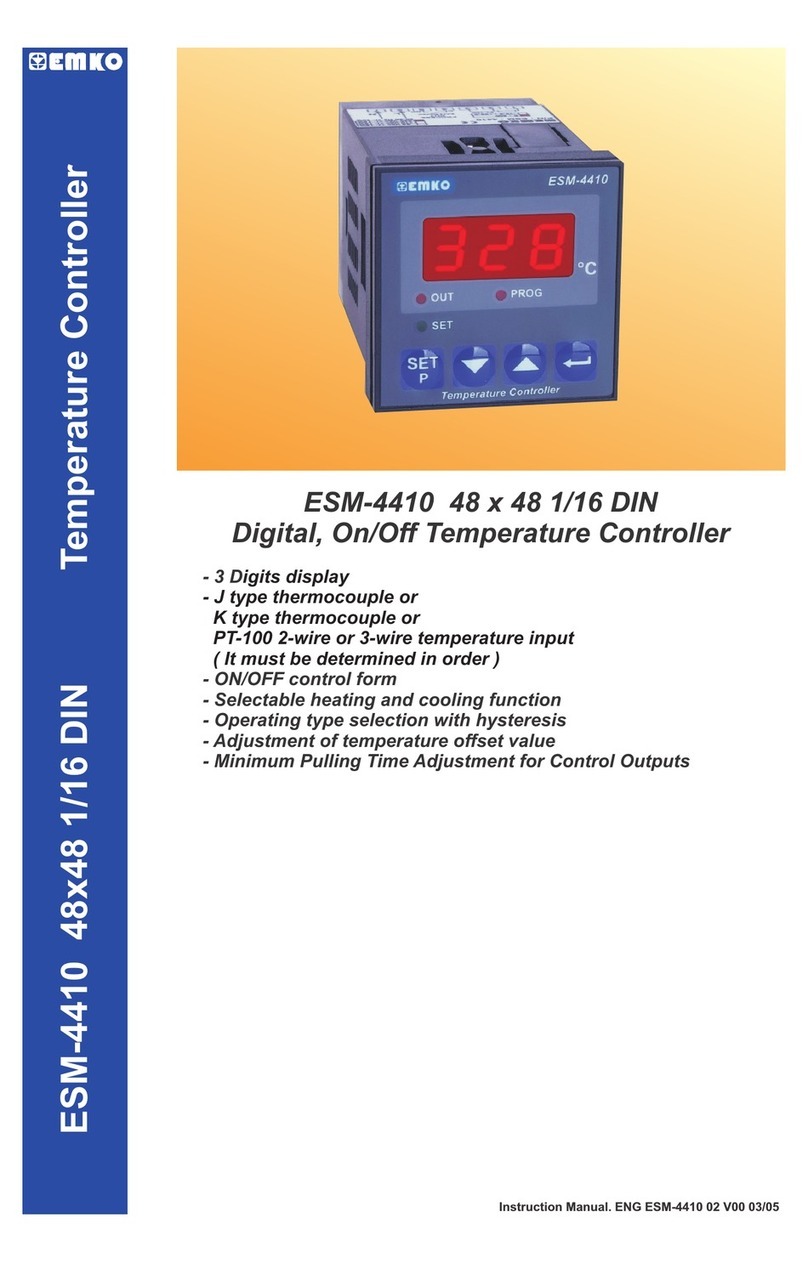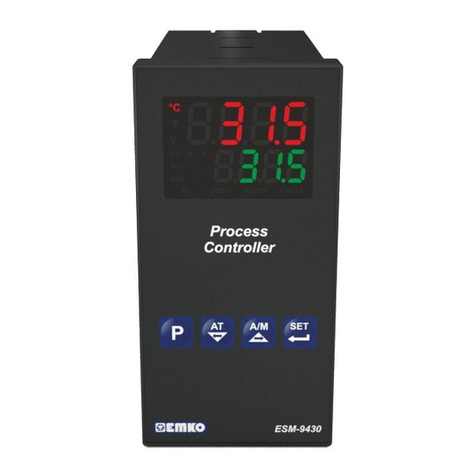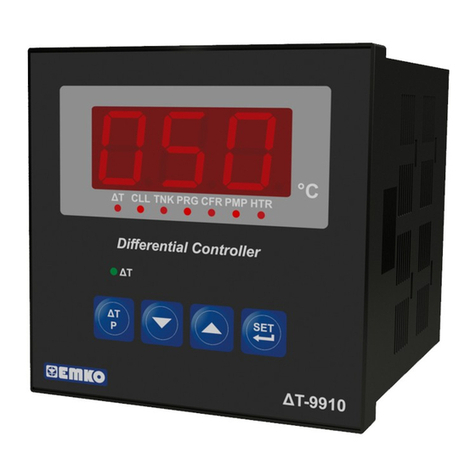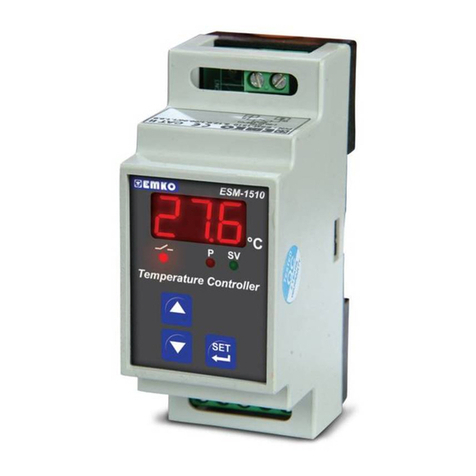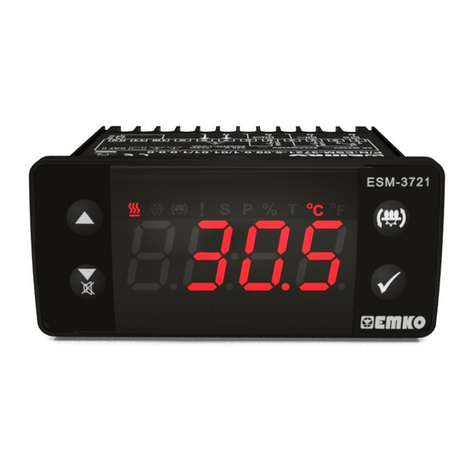ESM-4450 (48x48 1/16 DIN)
A BC D E FG HI /
/
U V W Z/
/
20 Configurable (Table-1) Table-1
Input Type ScaleBC
1 Relay Output
Output-1E
Table-1
41
42
43
44
45
0...50 mVZ
0...5 VZ
0...10 VZ
0...20 mAZ
4...20 mAZ
-1999
-1999
-1999
-1999
-1999
9999
9999
9999
9999
9999
Input Type ( Voltage and Current)ZScaleBC
0
1
2
None
RS-232
RS-485
Serial CommunicationD
-
EMC-400
EMC-410
Product Code
1.2 Ordering Information
1
V
Z
W
Symbol means Vac,
Symbol means Vdc
Symbol means Vac and Vdc
c
7
Supply Voltage
100-240V (- ) 50/60HzV15%;+10%
24 V (- 50/60Hz 24V (-V Z15%;+10%) 15%;+10%)
12 V (-Z15%;+10%)
A
1
2
6
Customer (Maximum 240V (- ))50/60HzV15%;+10%
9
00
01
02
03
04
07
08
09
None
EMO-400
Relay Output Module
EMO-410
SSR Driver Output Module
EMO-420
Digital (Transistor) Output Module
EMO-430
EMI-400
Digital Input Module
EMI-410
0/4...20 mA Current Input ModuleZ
EMI-420
0...5A CT Input ModuleV
Module-2HI
-
Product Code
Current Output Module ( 0/4 ...20 mA )Z
10
11
TC or 0...50mV Input ModuleZEMI-430
PT-100 Input Module EMI-440
12 EMI-450
0...10 V Input ModuleZ
00
01
02
03
04
07
08
09
10
11
None -
Relay Output Module EMO-400
SSR Driver Output Module EMO-410
Digital (Transistor) Output Module EMO-420
EMO-430
Digital Input Module EMI-400
0/4...20 mA Current Input ModuleZEMI-410
0...5A CT Input ModuleVEMI-420
TC or 0...50mV Input ModuleZEMI-430
PT-100 Input Module EMI-440
Module-1 Product Code
FG
Current Output Module ( 0/4 ...20 mA )Z
12 EMI-450
0...10 V Input ModuleZ
21
39
40
22
23
25
27
27
29
31
33
35
37
24
26
28
28
30
32
34
36
38
L ,Fe Const DIN43710
PT 100 , IEC751(ITS90)
PT 100 , IEC751(ITS90)
L ,Fe Const DIN43710
J ,Fe CuNi IEC584.1(ITS90)
K ,NiCr Ni IEC584.1(ITS90)
R ,Pt13%Rh Pt IEC584.1(ITS90)
S ,Pt10%Rh Pt IEC584.1(ITS90)
T ,Cu CuNi IEC584.1(ITS90)
B ,Pt30%Rh Pt6%Rh IEC584.1(ITS90)
E ,NiCr CuNi IEC584.1(ITS90)
N ,Nicrosil Nisil IEC584.1(ITS90)
C , (ITS90)
R ,Pt13%Rh Pt IEC584.1(ITS90)
S ,Pt10%Rh Pt IEC584.1(ITS90)
T ,Cu CuNi IEC584.1(ITS90)
B ,Pt30%Rh Pt6%Rh IEC584.1(ITS90)
E ,NiCr CuNi IEC584.1(ITS90)
N ,Nicrosil Nisil IEC584.1(ITS90)
C , (ITS90)
J ,Fe CuNi IEC584.1(ITS90)
K ,NiCr Ni IEC584.1(ITS90)
-100°C,850°C
-200°C,650°C
-199.9°C,650.0°C
-100.0°C,850.0°C
-200°C,900°C
-200°C,1300°C
0°C,1700°C
0°C,1700°C
-200°C,400°C
44°C,1800°C
-150°C,700°C
-200°C,1300°C
0°C,2300°C
-199.9°C,900.0°C
-199.9°C,999.9°C
0.0°C,999.9°C
0.0°C,999.9°C
-199.9°C,400.0°C
44.0°C,999.9°C
-150.0°C,700.0°C
-199.9°C,999.9°C
0.0°C,999.9°C
-148°F ,1562°F
-328°F,1202°F
-199.9°F,999.9°F
-148.0°F,999.9°F
-328°F,1652°F
-328°F,2372°F
32°F,3092°F
32°F,3092°F
-328°F,752°F
111°F,3272°F
-238°F,1292°F
-328°F,2372°F
32°F,3261°F
-199.9°F,999.9°F
-199.9°F,999.9°F
32.0°F,999.9°F
32.0°F,999.9°F
-199.9°F,752.0°F
111.0°F,999.9°F
-199.9°F,999.9°F
-199.9°F,999.9°F
32.0°F,999.9°F
Input Type(TC)
Input Type(RTD)
Scale(°C)
Scale(°C)
Scale(°F)
Scale(°F)
BC
BC
All order information of ESM-4450 are
given on the table at left. User may form
appropriate device configuration from
information and codes that at the table and
convert it to the ordering codes.
F i r s t l y, s u p p l y v o l ta g e t h e n
i n p u t / o u t p u t m o d u l e s a n d o t h e r
specifications must be determined. Please
fill the order code blanks according to your
needs.
Please contact us, if your needs are
out of the standards.
EMI-400, EMO-410, EMO-420 and
EMC-410 modules can not be
used in 12V type.Z
i
